Welcome to the Honeywell 3000 Installation Manual, your comprehensive guide to installing, configuring, and maintaining your thermostat. This manual ensures optimal performance and ease of use.
1.1 Overview of the Honeywell 3000 System
The Honeywell 3000 System is a non-programmable digital thermostat designed for compatibility with a wide range of HVAC systems. It offers straightforward operation, ensuring precise temperature control and energy efficiency. Part of Honeywell’s Pro Series, this thermostat is built for reliability and ease of use, making it suitable for both residential and light commercial applications. With features like simple installation and intuitive controls, the Honeywell 3000 is an ideal choice for users seeking a cost-effective solution for managing their heating and cooling needs. Models such as the TH3110D1008 highlight its versatility and adaptability to various system configurations.
1.2 Importance of Proper Installation
Proper installation of the Honeywell 3000 thermostat is crucial for ensuring optimal performance, safety, and energy efficiency. Incorrect installation can lead to system malfunctions, reduced efficiency, and potential safety hazards. Following the guidelines in this manual ensures compatibility with your HVAC system and prevents issues like short circuits or improper wiring. Correct installation also guarantees accurate temperature control, which is essential for maintaining comfort and minimizing energy consumption. Additionally, proper setup ensures the longevity of the thermostat and your HVAC system. Always refer to the manufacturer’s instructions and verify compatibility before proceeding with the installation to avoid common pitfalls and ensure a seamless experience with your Honeywell 3000 thermostat.
Pre-Installation Steps
Before installing the Honeywell 3000, ensure the power is off, verify system compatibility, and gather all necessary tools and materials for a smooth setup process.
2.1 Compatibility Check for Honeywell 3000
Before proceeding with installation, ensure the Honeywell 3000 is compatible with your HVAC system. Verify the system type (e.g., forced air, heat pump) and voltage requirements. Check the thermostat’s compatibility with your heating and cooling stages. Refer to the manual for specific model compatibility, such as TH3110D models. Ensure the wiring configuration matches your system’s terminal designations. Incompatible setups may lead to improper operation or damage. Always consult the product manual or contact Honeywell support if unsure. Proper compatibility ensures efficient performance and avoids potential installation issues.
2.2 Safety Precautions Before Installation
Before installing the Honeywell 3000, ensure all safety precautions are followed. Turn off the power supply to the HVAC system at the circuit breaker or fuse box. Verify the power is off using a voltage tester to avoid electrical shock. Wear protective gear, such as insulated gloves, when handling wiring. Ensure the system is compatible with the thermostat to prevent damage. Follow all local electrical codes and manufacturer guidelines. Do not attempt installation if unsure about any step. Improper installation can lead to safety hazards or system malfunctions. Always refer to the manual or consult a licensed professional if necessary.
Installation Process
The Honeywell 3000 installation involves wallplate mounting, wiring connections, and power setup. Activate Installer Mode for system configuration, ensuring compatibility and proper functionality.
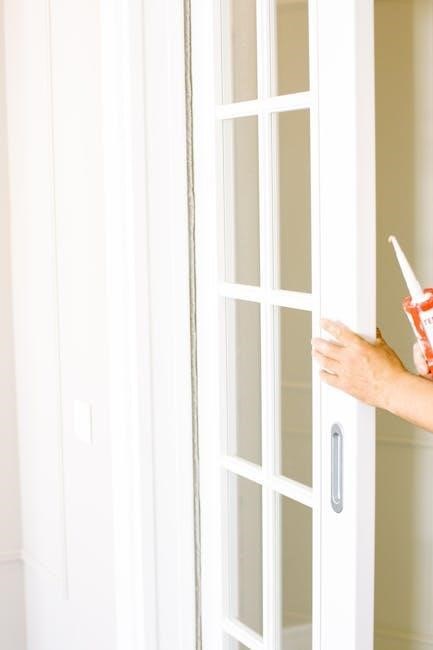
3;1 Wallplate Installation
Begin by removing the old thermostat and ensuring the wall is clean and dry. Mount the Honeywell 3000 wallplate using the provided screws, aligning it straight. Use a level to confirm proper alignment. If necessary, drill pilot holes for screws to avoid damaging the wall. Gently tighten the screws to secure the wallplate without over-tightening. Ensure all wires are safely routed through the wallplate’s wire holes. Double-check that the wallplate is firmly attached and level before proceeding to wiring. This step ensures a stable base for the thermostat’s operation and prevents future issues.
3.2 Power Options and Wiring
The Honeywell 3000 thermostat supports various power options, including a C-wire or battery power. For systems requiring a C-wire, ensure it is connected to the R and W terminals. If no C-wire is available, the thermostat can operate on battery power. Begin wiring by turning off the power to the HVAC system at the circuit breaker. Match the wires to the terminal designations on the wallplate, ensuring correct connections for heating, cooling, and fan operations. Secure all wires firmly to avoid loose connections. Double-check the wiring configuration against the system type (e.g., 24V AC) to ensure compatibility and proper functionality;
3.3 Wiring Terminal Designations
The Honeywell 3000 thermostat features clearly labeled wiring terminals to ensure accurate connections. The terminals are designated as follows: R (24V power), W (heating), Y (cooling), G (fan), C (common), and O/B (heat pump reversal). For systems without a C-wire, the thermostat can operate on battery power. When wiring, match each cable to its corresponding terminal based on your HVAC system type. Ensure all connections are secure to prevent malfunctions. Refer to the system-specific wiring diagram in this manual for precise configurations. Proper terminal connections are critical for reliable operation, so double-check all wires before powering up the system.
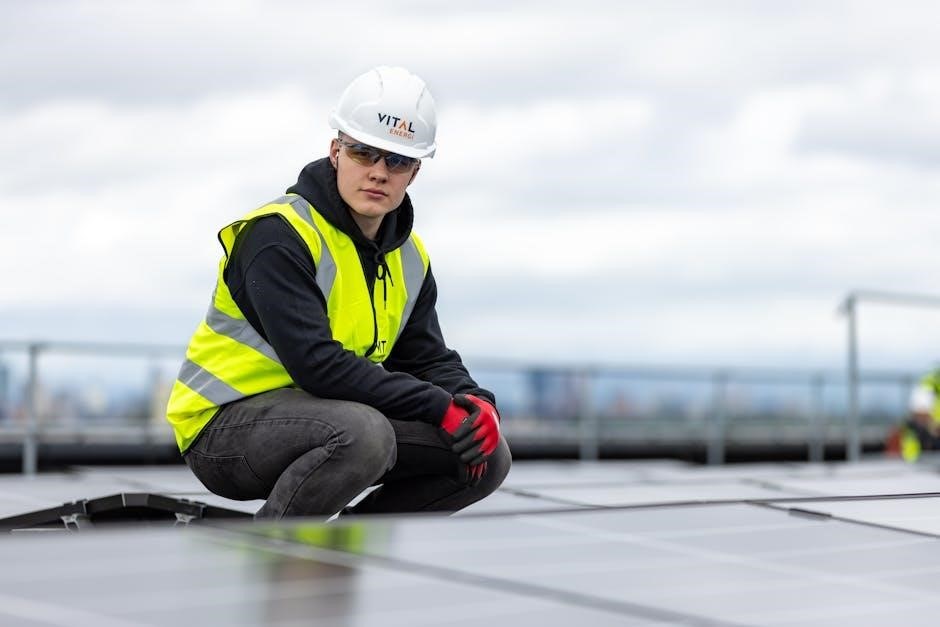
Thermostat Setup
Configure your Honeywell 3000 thermostat by activating Installer Mode and setting up system parameters. This ensures proper operation and customization to your HVAC system needs.
4.1 Installer Mode Activation
Activating Installer Mode on the Honeywell 3000 thermostat is essential for professionals to configure advanced settings. Access the menu, select “Installer,” and enter the password to unlock this mode. Navigate through system parameters to customize settings according to your HVAC setup. Save configurations to ensure proper operation. This step is critical for optimizing performance and compatibility with your specific system requirements. Always refer to the manual for the default password and detailed instructions. After setup, test the system to confirm everything functions correctly.
4.2 Configuration Options and Settings
The Honeywell 3000 thermostat offers a range of configuration options to tailor its performance to your HVAC system. Adjust temperature ranges, heating and cooling cycles, and fan operation settings. Customize the thermostat’s behavior to match your system’s capabilities. Access these settings through the menu after activating Installer Mode. Modify parameters such as temperature differential, cycle rate, and fan operation to optimize efficiency. Save your configurations to ensure consistent performance. Refer to the manual for default settings and guidance on adjusting advanced features. Proper configuration ensures the thermostat operates seamlessly with your heating and cooling system, providing reliable temperature control and energy efficiency.
Operating the Honeywell 3000 Thermostat
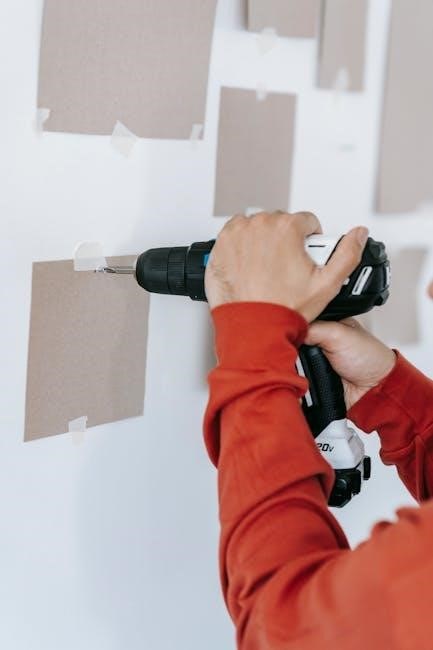
Operating the Honeywell 3000 Thermostat involves navigating the user-friendly interface to adjust temperature settings, manage fan operations, and schedule heating and cooling cycles efficiently.
5.1 Basic Operation and Navigation
Operating the Honeywell 3000 Thermostat begins with understanding its intuitive interface. The thermostat features a digital display showing current and set temperatures, along with navigation buttons for adjusting settings. Users can easily switch between heating and cooling modes or adjust the fan settings using the keypad. The interface is designed for simplicity, ensuring homeowners can perform basic operations without confusion. The display also provides clear indicators for system status, such as when the thermostat is actively heating or cooling. By familiarizing yourself with the navigation buttons and display, you can efficiently manage your home’s climate with precision and ease.
5.2 Fan Operation Settings
The Honeywell 3000 Thermostat offers customizable fan operation settings to enhance comfort and energy efficiency. Users can choose between Auto, On, and Circulate modes. The Auto mode operates the fan only during heating or cooling cycles, minimizing energy use. The On mode keeps the fan running continuously for consistent air circulation. The Circulate mode cycles the fan on and off to mix air without activating the HVAC system. These settings are easily accessible through the thermostat’s interface, allowing homeowners to tailor fan operation to their preferences. Proper use of these modes can improve indoor air quality and reduce energy consumption, ensuring optimal comfort year-round.
5.3 Scheduling and Programming
The Honeywell 3000 Thermostat allows for advanced scheduling and programming to optimize temperature control. Users can set specific temperature levels for different times of the day, ensuring energy efficiency and comfort. The thermostat supports multiple schedules, including Wake, Sleep, Leave, and Return modes. Programming is straightforward, with an intuitive interface that guides users through the process. Additionally, the system can be set to Hold or Run modes, providing flexibility for temporary adjustments. Scheduling can be customized to align with daily routines, reducing energy consumption during periods of inactivity. Proper programming ensures consistent comfort while minimizing energy waste, making it an essential feature for homeowners seeking convenience and efficiency.

Maintenance and Troubleshooting

Regular maintenance ensures the Honeywell 3000 operates efficiently. Clean the thermostat and check wiring for issues. Troubleshooting involves identifying and resolving common problems promptly. This ensures optimal performance and extends system lifespan. Always refer to the manual or contact support for persistent issues.

6.1 Regular Maintenance Tips
Regular maintenance is crucial for the Honeywell 3000’s optimal performance. Clean the thermostat’s display and sensors with a soft cloth to ensure accurate temperature readings. Check and replace batteries annually if applicable. Inspect wiring connections for any signs of wear or damage. Dust buildup can interfere with functionality, so vacuum gently around the unit. Ensure proper airflow by maintaining a clear space around the thermostat. Update software periodically to access new features and improvements. Schedule professional inspections annually for complex systems. Addressing minor issues promptly prevents major malfunctions. By following these tips, you extend the lifespan and efficiency of your Honeywell 3000 system.
6.2 Common Issues and Solutions
Common issues with the Honeywell 3000 include a blank or unresponsive display, incorrect temperature readings, or system malfunction. For a blank screen, check power sources and ensure proper wiring connections. If the thermostat shows incorrect temperatures, recalibrate it via the settings menu. For unresponsiveness, reset the device by turning power off and on. Address wiring issues by verifying terminal connections. If problems persist, consult the troubleshooting section or contact a professional. Regular maintenance, such as cleaning sensors and updating software, can prevent many issues. Always refer to the manual for specific solutions tailored to your system.
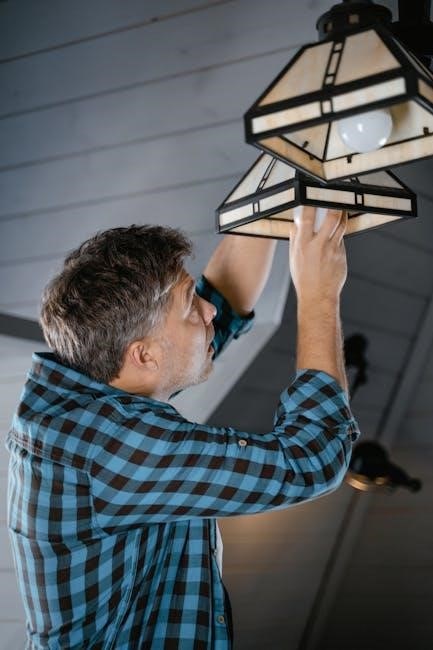
Additional Features and Upgrades
The Honeywell 3000 offers advanced features like smart home integration, voice control compatibility, and energy-saving modes. Upgrades include software updates for enhanced functionality and system optimization.
7.1 Advanced Features of the Honeywell 3000

The Honeywell 3000 boasts advanced features designed to enhance comfort and efficiency. It includes smart home integration, voice control compatibility, and energy-saving modes. The thermostat supports geofencing, learning algorithms, and remote access via smartphones. Additionally, it offers advanced humidity control, multi-stage heating and cooling, and system monitoring. These features ensure optimal performance and personalized settings. The Honeywell 3000 also supports integration with popular platforms like Amazon Alexa and Google Assistant, enabling seamless voice commands. Its energy-saving modes help reduce utility bills while maintaining desired temperatures. These advanced capabilities make the Honeywell 3000 a versatile and modern solution for home climate control.
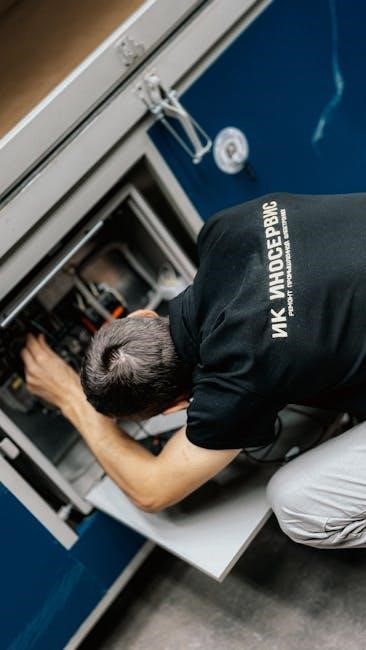
7.2 Integration with Smart Home Systems
The Honeywell 3000 seamlessly integrates with popular smart home systems, enhancing convenience and control. Compatible with Amazon Alexa and Google Assistant, it allows voice command functionality for temperature adjustments. Users can also access and manage settings remotely through smartphone apps, ensuring flexibility. This integration enables features like geofencing, which adjusts temperatures based on your location, and smart scheduling tailored to your lifestyle. The Honeywell 3000 works effortlessly with other smart devices, creating a unified home automation experience. This compatibility ensures that your thermostat adapts to your needs, optimizing comfort and energy efficiency while maintaining ease of use.
Congratulations on completing the Honeywell 3000 installation. Your system is now ready for use, offering ease of operation and energy efficiency. Refer to this manual for future assistance.
8.1 Final Checks and Verification
After completing the installation, perform a thorough system check to ensure everything functions correctly. Power on the thermostat and verify the display lights up. Test heating and cooling modes to confirm proper operation. Check all wiring connections for security and accuracy. Ensure the wallplate is securely mounted and level. Verify that the thermostat is configured for your specific HVAC system type. Review the scheduling and programming settings to ensure they align with your preferences. Check for any error messages or unusual behavior. Finally, confirm that the thermostat integrates smoothly with any smart home systems if applicable. A successful verification ensures optimal performance and energy efficiency.
8.2 Resources for Further Assistance
For additional support, visit Honeywell’s official website for downloadable PDF manuals, installation guides, and troubleshooting tips. Contact Honeywell customer support directly for personalized assistance. Authorized dealers and HVAC professionals can also provide expert guidance. Online forums and community discussions offer peer-to-peer advice and solutions. Refer to the Honeywell Pro 3000 Series product information for detailed specifications. Video tutorials on platforms like YouTube demonstrate step-by-step installation and configuration. Ensure to use only genuine Honeywell parts for upgrades or repairs. If issues persist, consult a licensed technician to avoid system damage. These resources ensure you maximize your Honeywell 3000 thermostat’s performance and longevity.
